 “I believe in the nobility of the human spirit. It is that for which I look in a subject I am to direct. I do not believe that everybody is bad, that the whole world is wrong. The greatness of Shakespeare’s plays is the nobility of the human spirit, even though he may destroy the character.” —Anthony Mann, 1964 (The Crime Films of Anthony Mann)
“I believe in the nobility of the human spirit. It is that for which I look in a subject I am to direct. I do not believe that everybody is bad, that the whole world is wrong. The greatness of Shakespeare’s plays is the nobility of the human spirit, even though he may destroy the character.” —Anthony Mann, 1964 (The Crime Films of Anthony Mann)
First and most important, if you don’t know this movie and you love noir, see it.
If you don’t know much about noir but appreciate exciting, beautifully made movies, see it.
If you are moved by great storytelling, acting, and extraordinary cinematography, see it.
If you have 78 minutes and feel like something thrilling, creepy, romantic and tragic?
Well, you get the idea.

Watch Raw Deal, and don’t do it on the fly—sit down, turn off your phone, and give it your full attention. You will be rewarded.
There, my job is done. Now we can talk about the movie. Here’s a link to a synopsis if you are so inclined: here you go.
Corkscrew Alley is a crushing habitat for nobility of the human spirit. It’s great shorthand for the corrupt world so many noir characters desperately try to escape. It’s just that most of its denizens have had the aspiration knocked out of them by brutality and poverty, and their spirits are in moth-eaten tatters. Even when they act on an impulse toward decency, they get it in the neck and are knocked back into crime,  shabbiness: Corkscrew Alley.
shabbiness: Corkscrew Alley.
In Raw Deal, Mann focuses primarily on four characters, three in a romantic triangle. The fourth is an impressively disgusting villain, a sadistic pyromaniac criminal whose efforts to kill the protagonist before he comes to claim the $50,000 owed him create the simple, on-the-lam plot.
But it’s the romantic triangle, particularly the two women, who Mann develops beyond the usual scope of noir. As Jeanine Basinger notes in Anthony Mann (2007), it is in Raw Deal that Mann for the first time creates two characters who are deeply fused, almost mirror images, a dynamic he would develop further in his westerns. In this case it’s two great actresses and noir goddesses, Claire Trevor and Marsha Hunt, who form this dyad.
I always wonder when in the thrall of a work of collaborative art, if those who made it had a sense of its quality or importance while caught up in the process of making it. Was the power of (forgive me, I date myself) Blonde on Blonde, or Sgt. Pepper, or Astral Weeks apparent to the musicians and producers as they worked?

Maybe the lower the budget, the less likely those involved are to be aware of having a part in making something extraordinary, something that could live on for many decades and in some cases become celebrated in ways unthinkable in the movie’s own time. It’s great the Edgar Ulmer lived to see Detour celebrated, and the same of Joseph H. Lewis and Gun Crazy. But in an interview with Claire Trevor, decades after making Raw Deal, she hardly remembers it. And you can see why. She was a busy actress, going from one movie to another. Noir didn’t exist yet, not as an artistic designation, and so Trevor’s noirs when she was making them were just low-budget crime movies. Raw Deal was for Trevor just another gig.
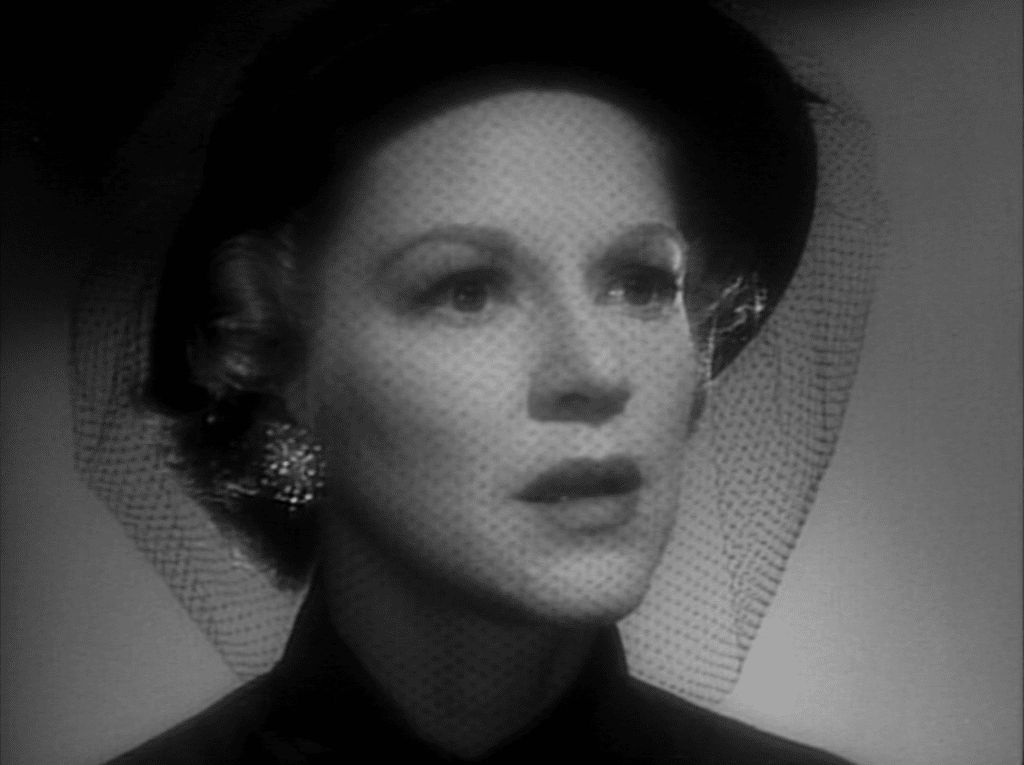
Marsha Hunt’s memories of working on Raw Deal mostly centered on her perception that Mann didn’t direct the actors, focusing instead on lighting and camera placement, leaving his cast to work out their own characterizations and bits of business. The director, who had himself been an actor on Broadway before moving into film, knew he could trust this fine cast. The versatile Dennis O’Keefe, equally at home in comedy and drama and was also a published writer who aspired to direct, holds his own with his leading ladies, two of the very best.

To Anthony Mann, still in the first phase of his Hollywood career, Raw Deal was just a follow-up to his previous year’s success with T-Men, also starring homme fatale Dennis O’Keefe, also shot by John Alton. Like Trevor’s experience going from one film to another, Mann’s was as a busy journeyman director, air-dropped from one project to the next, so that he couldn’t afford to invest much emotionally in any of them.
“There has been so much yapping over the years about the film director, the film *auteur*…that it has been very difficult for the general public and even for the informed public, to realize that making a film is an industrial process and it is perfectly possible to edit, alter, present and have a resounding success without the director having anything more to do with the film from the moment he stops shouting at the actors.” —Michael Powell
Right! Great thing to bear in mind when we love a film and imagine that the director had overall control of the project, that directing was for most an artistic endeavor rather than the reality that they were hired guns who came in, shot a movie, then moved on to the next one. Yes, there are exceptions among directors (and even stars). But in the main, Hollywood filmmaking was, as Powell says, “an industrial process,” not a personal artistic one.
That makes the greatness of so many movies made in this industrial process even more miraculous. Sometimes the stars and cinematic elements aligned—the right producer, script, director, cinematographer, and cast, and the result is a thing of beauty that continues to delight, disturb, and enrich us many decades later.
Raw Deal is one of those.
So what is it that sets it apart from a couple hundred other noirs?
First thing is what Mann said in the quote at the top of this piece, in 1964. There is a yearning for redemption, to express “the nobility of the human spirit,” that curls around the characters like cigarette smoke, like that San Francisco fog that Alton evoked so convincingly. Joe (O’Keefe) is a gangster, but when he was a kid he risked his life to rescue some other kids from a fire—Ann (Hunt) tells Joe that’s what first got her interested in him. She wants something better for him, and though he resists her pressing him away from the dirty life he’s trapped in, toward “a little common decency,” as she says, she gets under his skin. And even Joe longs for “a breath of fresh air,” not a feature of his gangster life, prison, Corkscrew Alley.

Joe wants to crash out, like weary gangster Roy Earle (Bogart in a break-out role) in High Sierra (1941). He dreams of living like normal people, not under constant threat from the law or your own crime boss.
Joe’s moll, Pat (Trevor), is so broken, so beaten down from Corkscrew Alley life that she takes insults and abuse without flinching. But still, even Pat has a pilot light of yearning for something better. It’s just that she’s so damaged she can’t imagine anything better than a life with career criminal Joe. Unlike some other noir dames Trevor played (thinking particularly of *Murder, My Sweet* and *Born to Kill*), who are the sociopathic equals of any onscreen, Pat has the vulnerability of Trevor’s most famous role as TK in Stagecoach*(1939), as a prostitute, and in Key Largo (1949), as Edgar G. Robinson’s battered, alcoholic moll.

Course part of that is just sex, not spiritual yearning. Joe knows he’s hot for social worker Ann, but Ann isn’t quite as honest with herself about her feelings for him. She tells herself it’s just professional concern for a client, but Joe knows better. (One thing about Corkscrew Alley: it attunes you to the basic, baser motivations.)
Ann (Hunt) is the only one of the four principals who wasn’t formed by Corkscrew Alley. She grew up in slightly more genteel poverty, her father a schoolteacher who imbued her with ambition for a better life—”He died in the war of the Depression, only we didn’t get any medals,” she says bitterly to Joe when he accuses her of having had it easy. She hits back, hard, telling him she’s had to fight, just not “that stupid way,” with a gun. She’s managed to get an education, a decent apartment and car, a solid job. Her interest in Joe is a threat to everything she’s accomplished, but she’s blind to that until it’s too late. But when she tells Joe all she wants is “just a little decency, that’s all,” he looks like she’s broken through his defenses.
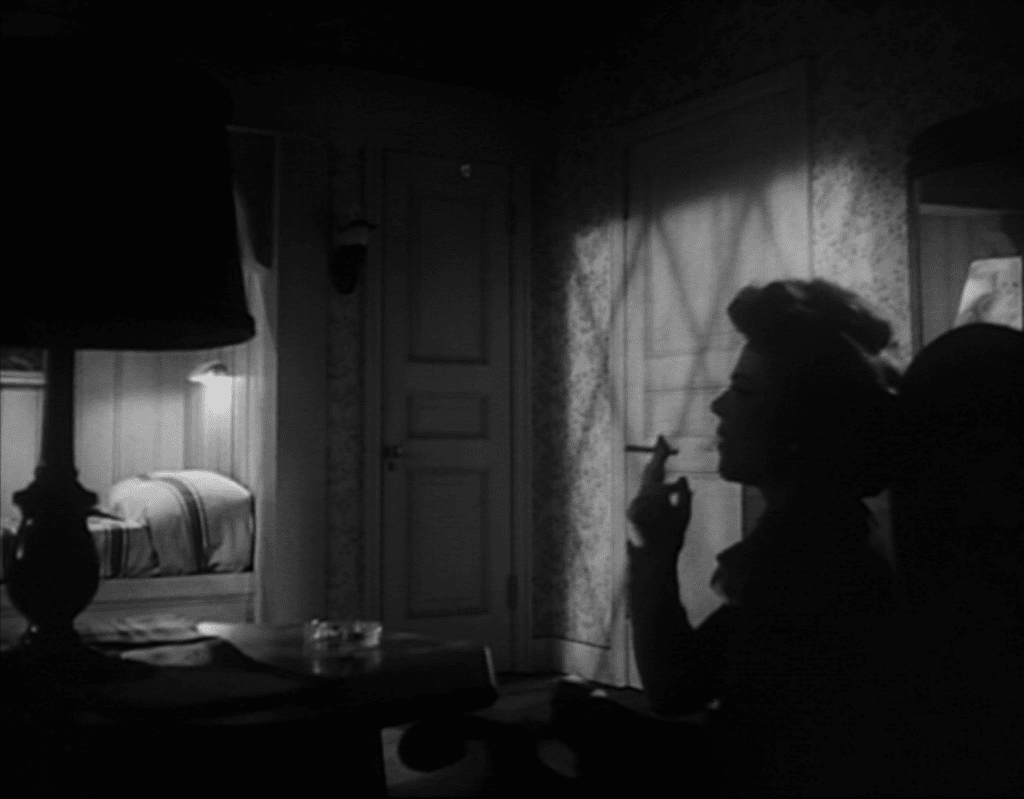
The third member of the triangle is Pat (Trevor), a hard-time girl who loves Joe desperately. She reminds me a little bit of Marie, Ida Lupino’s character in High Sierra, so emotionally damaged that she doesn’t know if she’s good enough for aging gangster Roy Earle. Marie and Pat are so battered by life that they have no experience of tenderness, kindness, love. The crooks they fall for look good to them because anything better is beyond the scope of their dreams.

Jeanine Basinger writes about how Pat and Ann are almost twinned, two characters who reflect each other, I would say in their differences as well as their similarities. In the first scene, at the prison, we first see each woman hatted and veiled, so their faces, which give away their feelings, are fenced off from the world and the unstable feelings it evokes. Pat wants nothing but Joe, her slender hope for any kind of happiness is all condensed into her desire to be with him, while Ann, who has relied on self-discipline to make her way in the world, is less connected to her own feelings about Joe, and if she were aware of them, she’d see instantly how hopeless they are. Toward the end, Pat finds that as much as she wants to hate Ann, she can’t—she recognizes her as another woman who loves Joe. This approaches compassion, an astonishing spiritual attainment for someone as emotionally beat-up as Pat, and a kind of metaphorical fresh air that lifts her above her own suffering.
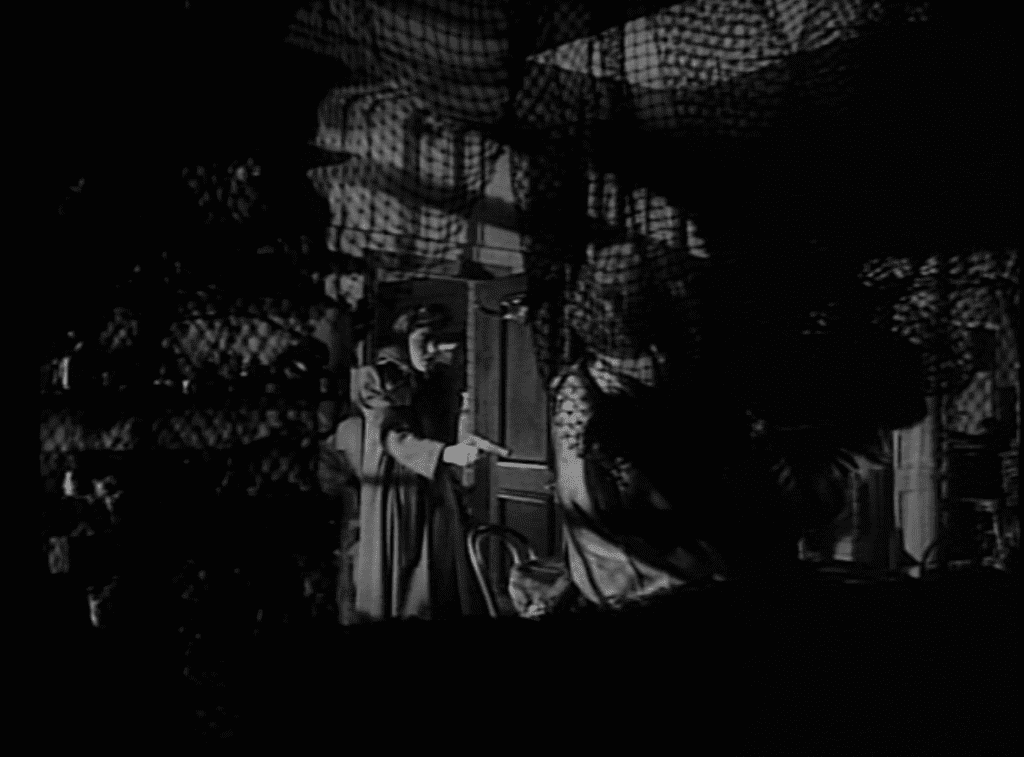
But it’s the feelings we don’t recognize that control us, and while Ann didn’t ask to be taken hostage on Joe’s and Pat’s cross-country odyssey, and her revulsion at their casual criminality and violence are authentic, this good girl finds herself drawn closer to Joe’s way of life than she could ever comfortably acknowledge.

One of Raw Deal’s novelties is its use of the almost ubiquitous noir voiceover, usually a male voice relating past-tense events, often in flashback. Here the first difference is that the film’s voice is present-tense, and it belongs to Pat, her feelings are about the only things she owns. The second difference is that it is a female voice, not the norm in noir. It’s fitting that Pat should speak directly to us, or rather that we are allowed to eavesdrop on her internal storytelling of the narrative in which she finds herself. One of my only quibbles with Raw Deal is the theramin that underscores all of Pat’s voiceover. It feels like one of those club-us-like-baby-seals things where someone—perhaps Mann, perhaps not—decides we need something to tell us we’re hearing a voiceover. Like we need a frickin’ neon sign. The theramin is intrusive and stylistically at odds with the very good score. I’m guessing it was a producer who insisted on it:
PRODUCER, flicking cigar ash: What’s—what’s she saying? Why isn’t her mouth moving?
ASSISTANT: Right, sir. It’s a voiceover.
PRODUCER: Voiceover…but it’s a dame!
ASSISTANT: Yes, sir. It’s a little bit different, but we thought—
PRODUCER: Never mind what you thought! Put some kind of sound with it, so the audience knows why her mouth isn’t moving!
ASSISTANT: Well…we have an hour’s credit at the recording studio. I’ll talk to the composer, we just need one cue, we can repeat it every time the voiceover comes in…
PRODUCER: Yeh, whatever, just make sure when we hear the dame’s voice and she ain’t talking, we know it’s on purpose.
ASSISTANT: Sure thing, L.Q….
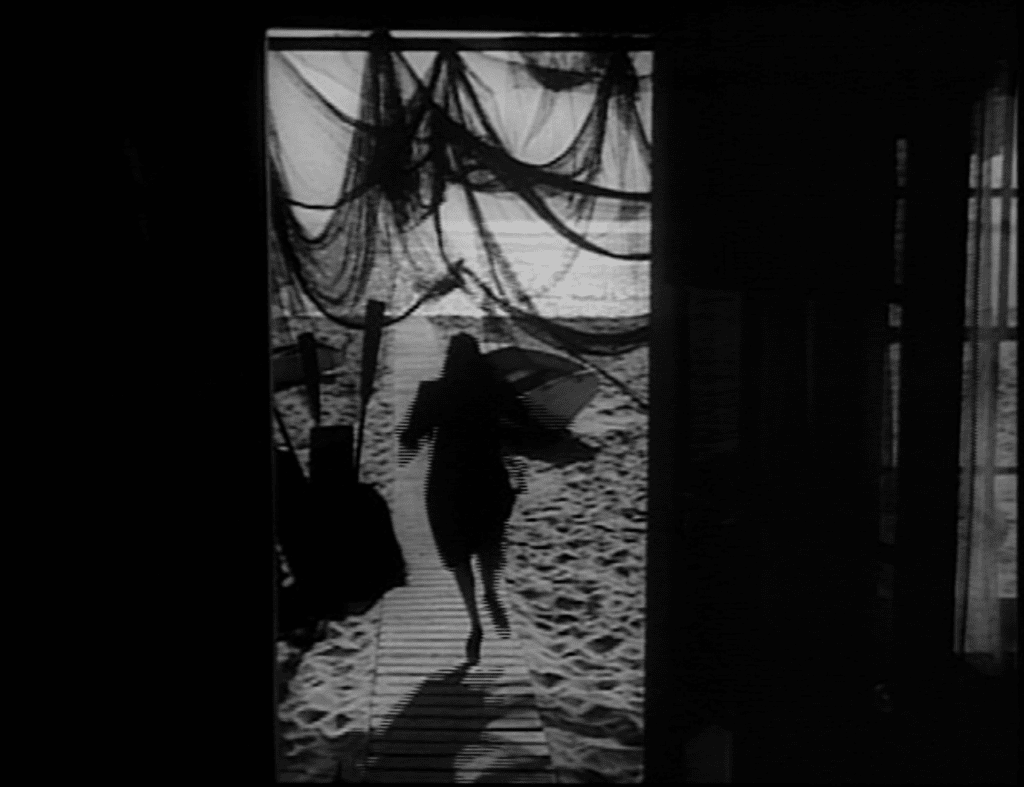
Most oft-discussed of Raw Deal are its visuals: the glorious cinematography, how Mann and Alton trap Joe and his girls in tight, closed spaces. Joe is suffocating for lack of fresh air, that’s how he expresses his drive to escape the dirty dead end of Corkscrew Alley. From the film’s opening, through its series of action sequences, we and the characters are repeatedly crammed into tight shots in cars, closets, freighter cabins, and framed in windows, behind bars or mesh.
Mann makes use of his female stars’ extraordinary acting in long closeups. Their faces pass through what would take paragraphs or pages to express, and we feel an intimate connection to their interior lives.
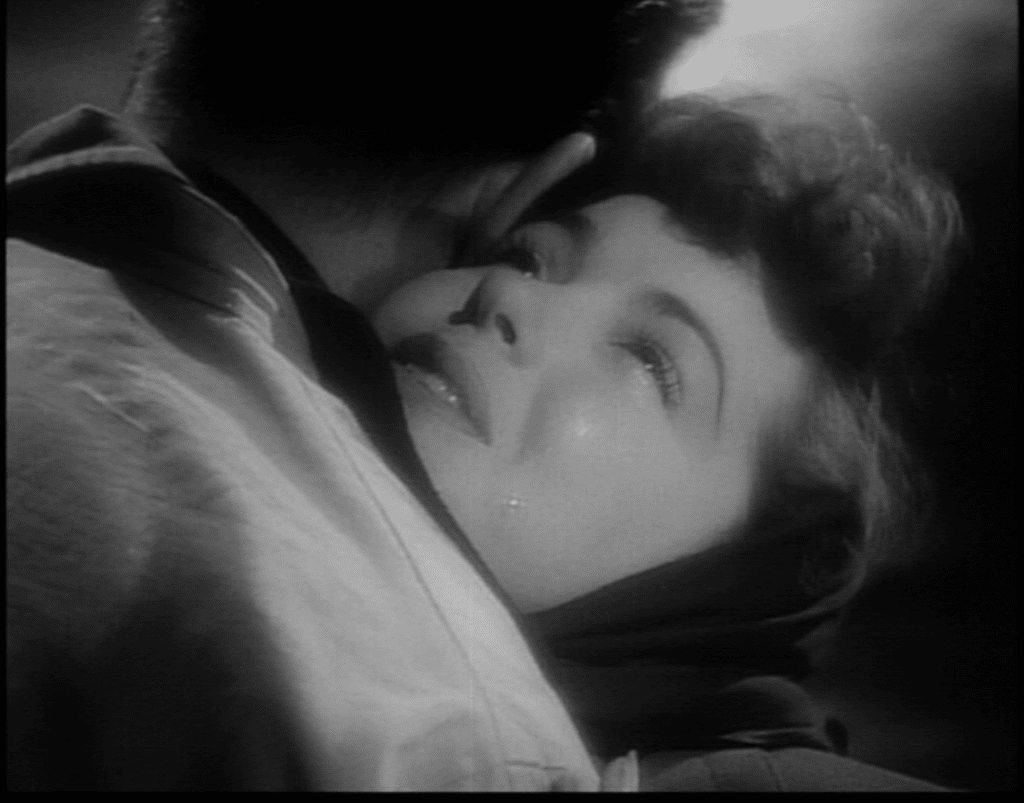
The film’s final bravura sequence, with a thrilling gun ambush in the street followed by a knock-down, drag-out fight in the middle of a raging fire, brings us back to, where else?—Corkscrew Alley. Pat does the right thing, partly because she knows she will never really have Joe and partly because she’s not quite bad enough to let her rival face grievous harm. Joe does the right thing, too, and finally gets that breath of fresh air he’s spent his life searching for. Both of them have found a little bit of grace they didn’t know they had, but it doesn’t change their fate.
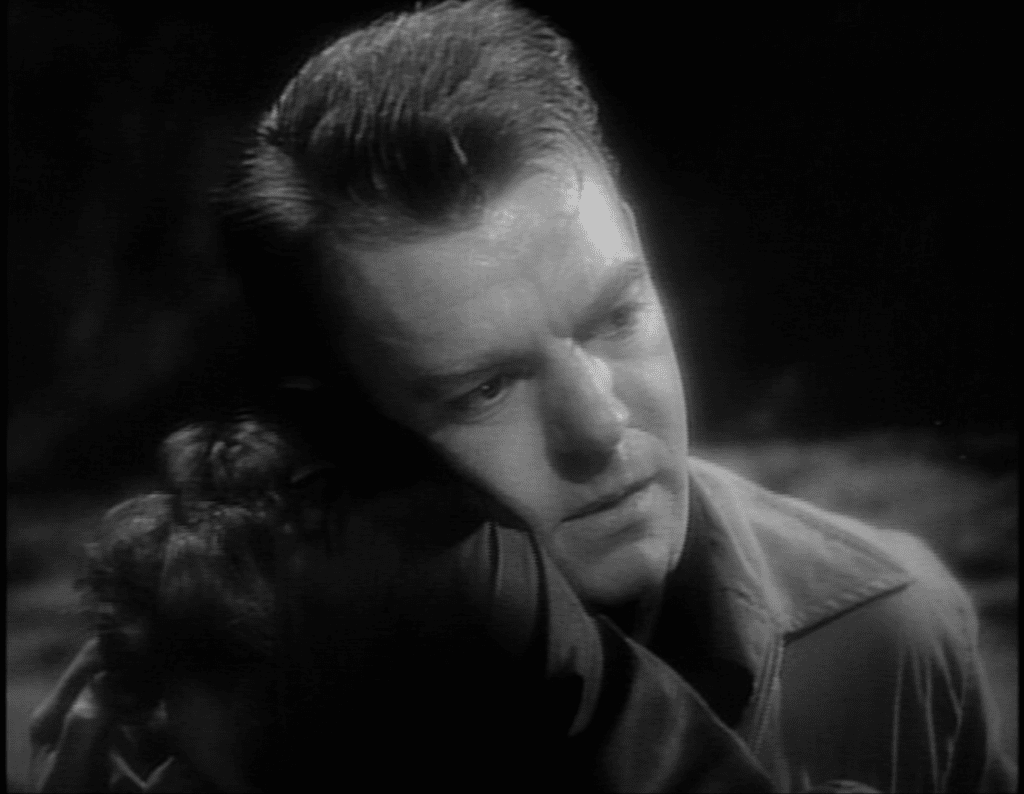
Rick meets his fate, too, and Mann and Alton make sure it’s as baroque and horrific as anything Rick could dream of doing to an enemy (or a girlfriend, but you’ll have to see the movie to understand that ref).
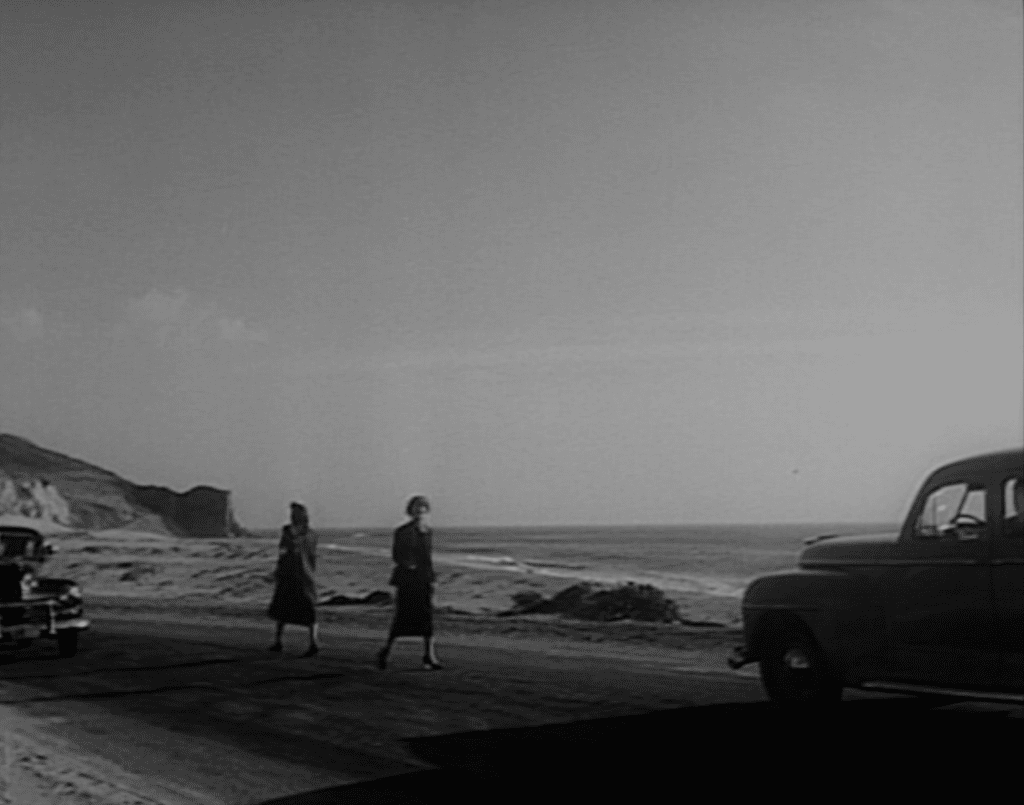
And Ann? Her boundaries broken, her understanding of the world and her own psyche shattered, she has to go back to the life she worked so hard to attain, but neither she or that carefully crafted life will ever be the same. At the beginning of the story, she is a kind person, but it takes the events of Raw Deal to force her to confront her own unruly desire and even potential for violence.
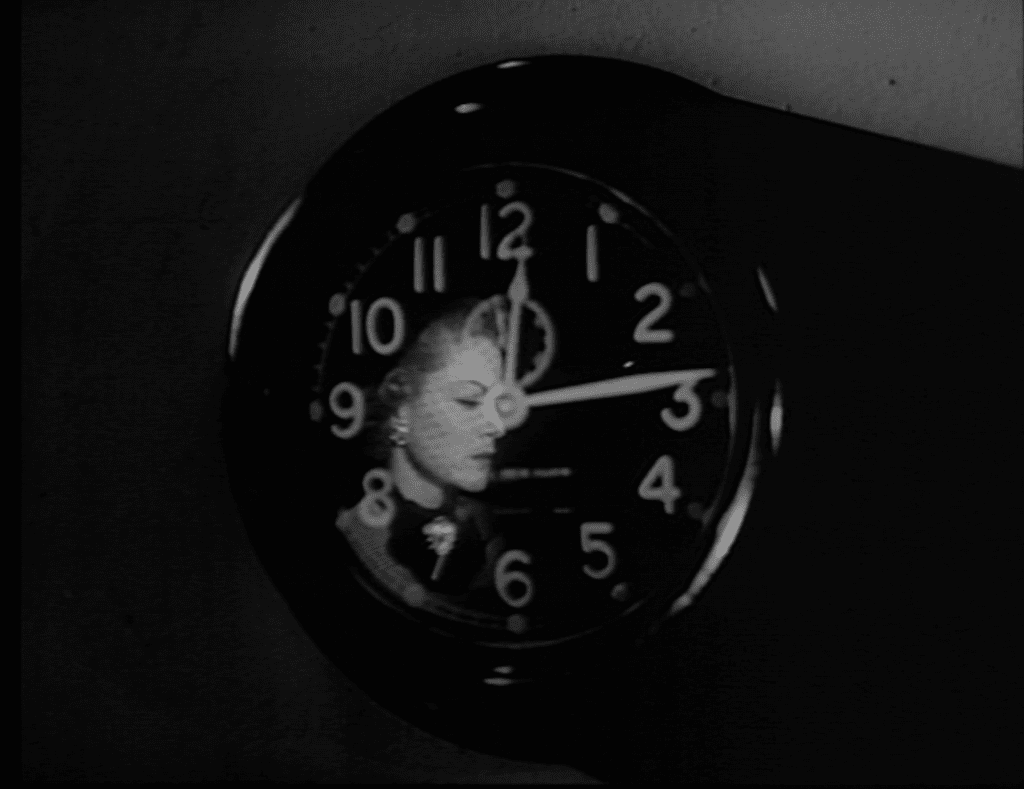
Everyone loses what they prize most. And three of the four find that they are able to sacrifice their own fondest desires to serve something larger than themselves. Apparently there’s room for a spark of nobility, even in Corkscrew Alley.
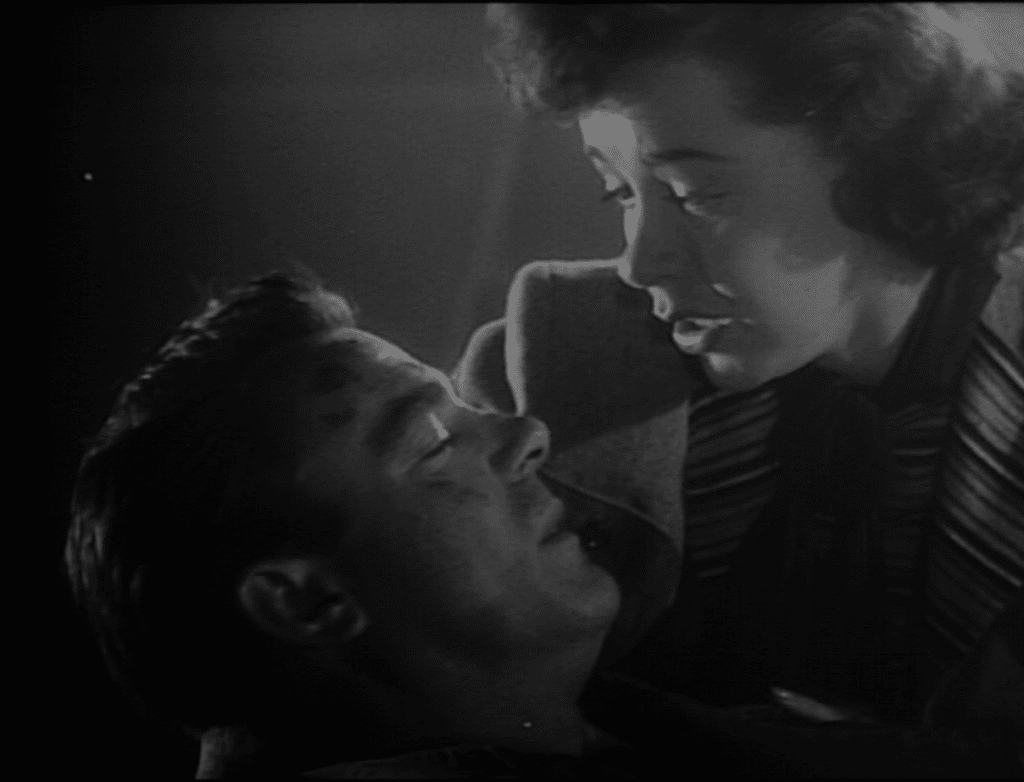
This post was written for the Classic Movie Bloggers’ Association 2019 Spring blogathon. Do yourself a favor and head on over to read more noiry goodness.

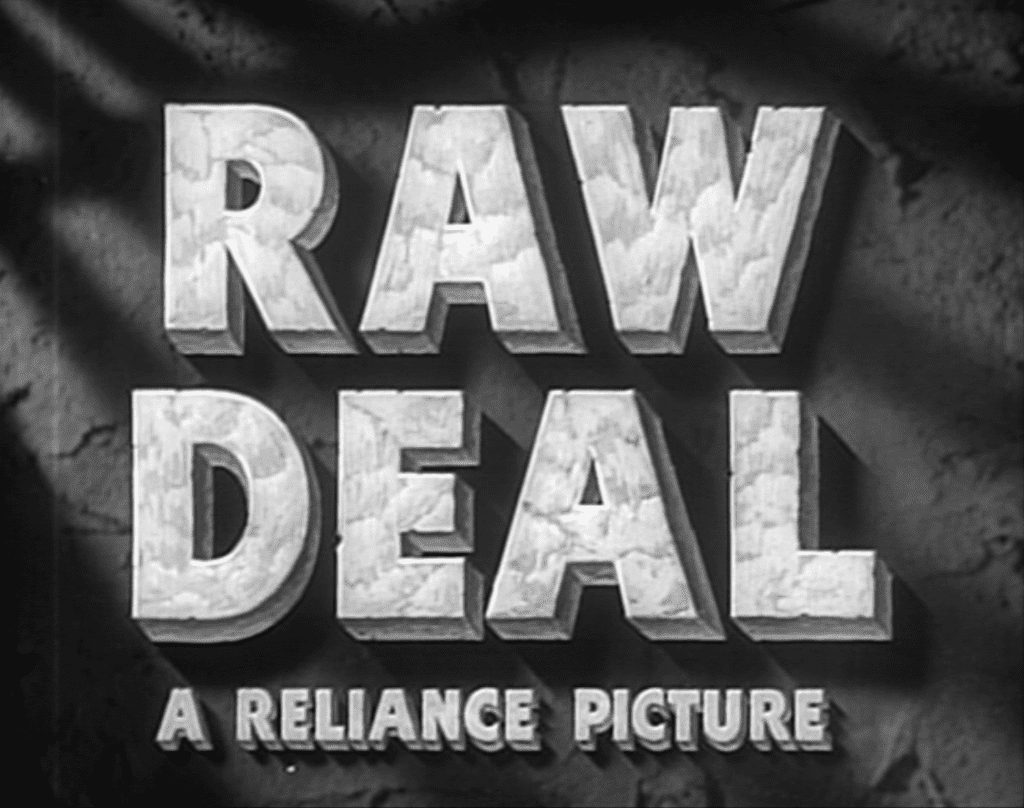 “I believe in the nobility of the human spirit. It is that for which I look in a subject I am to direct. I do not believe that everybody is bad, that the whole world is wrong. The greatness of Shakespeare’s plays is the nobility of the human spirit, even though he may destroy the character.” —Anthony Mann, 1964 (The Crime Films of Anthony Mann)
“I believe in the nobility of the human spirit. It is that for which I look in a subject I am to direct. I do not believe that everybody is bad, that the whole world is wrong. The greatness of Shakespeare’s plays is the nobility of the human spirit, even though he may destroy the character.” —Anthony Mann, 1964 (The Crime Films of Anthony Mann)

Raw Deal isn’t 78 minutes; it is a lifetime, 3 lifetimes. You showed us that with your article. Mann and Alton did it with the film.
I was in awe the first time I saw Raw Deal. Firstly, Claire’s narration was so surprising and pleasing. It aligned me to her side. I wanted to immediately watch it again to experience things fully from Marsha’s side.
I have seen Raw Deal and I agree: It’s a must-see. You make some great points about the uniqueness of this film, one of them being the female voice-over. Noir was a place where women could tackle meaty roles, and that’s just one reason making it a worthwhile genre to see.
Thank you kindly, Marianne.
I’m more than noir curious, not as well read on it as I’d like to be but always happy to discover new films. Noir Alley has been such a great way to expand my viewing horizons and also get the kind of deep background stuff I’m crazy about—about the making of the movie, sure, but also the backstory of the people who made it.
One of the great things about loving old movies is, we’ll never get bored—there’s always more to learn and love.
Wow, fantastic review and analysis! I don’t know Dennis O’Keefe yet, and I’m told I have to watch T-men, but this sounds like it needs to be right up there on my list. Especially with Anthony Mann at the helm, and such reliable female actors as Claire Trevor and Marsha Hunt.
Will you be coming to Capitolfest this year?
Thank you, Jocelyn, and apologies for not responding sooner—no idea why these comments weren’t visible the past few times I’ve been working in here.
I did not make Capitolfest last year and don’t know about this year, but I sure do dream about it! A unique experience.
I’m a little light on my exposure to noir, so this blogathon has given me lots of leads on w hich I need to follow up and this sure seems like one of them. Your article has me kind of hooked, and I must say it was beautifully realized with the terrific screen shots.
Thanks, Marsha, glad you liked it.
I apologize for being so long in replying, but I’m just finding comments now that weren’t visible before(?).
Did you get to see Raw Deal, and if so, what did you think?
Fantastic article. I adore this film, for all the reasons you mentioned. I actually thought about doing a piece on Dennis O’Keefe for the blogathon, what a great homme fatale!
Thank you, Carol.
I can’t think of another noir, or any other genre for that matter, that has at its center a triangle in which all three parties are so haunted with hurt and longing.
I bought a DVD copy of Raw Deal from a record store twenty years ago. I started reading about Film Noir in the ’70s so I recognized the title. Your review captured what was so unique about this film and what makes it work today. I would like to know your view of Rick, Spider and Fantail. And, that poor girlfriend.
What a great read. Raw Deal is one of Anthony Mann’s most underrated films, and O’Keefe is simply terrific as the callous homme fatale. Choice screenshots also.
Thanks, Danilo!
Glad y’all are liking the screenshots. I love doing them, but it’s very time-intensive. Right now I’m working on a piece on the marriage at the center of Giant, and wondering if I’ll ever come out the other side or just get lost in its 200+ minutes…
I adore this film. I have a DVD copy although not the recently released restored version. Your blog really nailed the psychological underpinnings if the three leads.
Thank you, Janet.
I think there’s a newer DVD/Blu-Ray release, better quality.
After all, Christmas is just around the corner…
I love the Theramin music.
I enjoyed your review, but the column-width photos breaking the story into tiny fragments is really distracting. Perhaps turn the photos into thumbnails that can be clicked on to enlarge, and let the review flow around them? Your prose deserves better than to be cut up this way.
thank you kindly. I have challenges putting in the time the site deserves but hope to one of these days be able to go in and fix all sorts of things in the posts. sorry for the inconvenience, thank you for reading!
Just for the record, my father, Leopold Atlas, wrote the screenplay for Raw Deal. It was originally titled, Corkscrew Alley. My dad and Anthony Mann, the director, were friends and colleagues. It really is a classic “film noir”.
Thank you so much for sharing this here! I have great respect for this screenplay and of course for Anthony Mann’s direction. Really appreciate your reaching out.